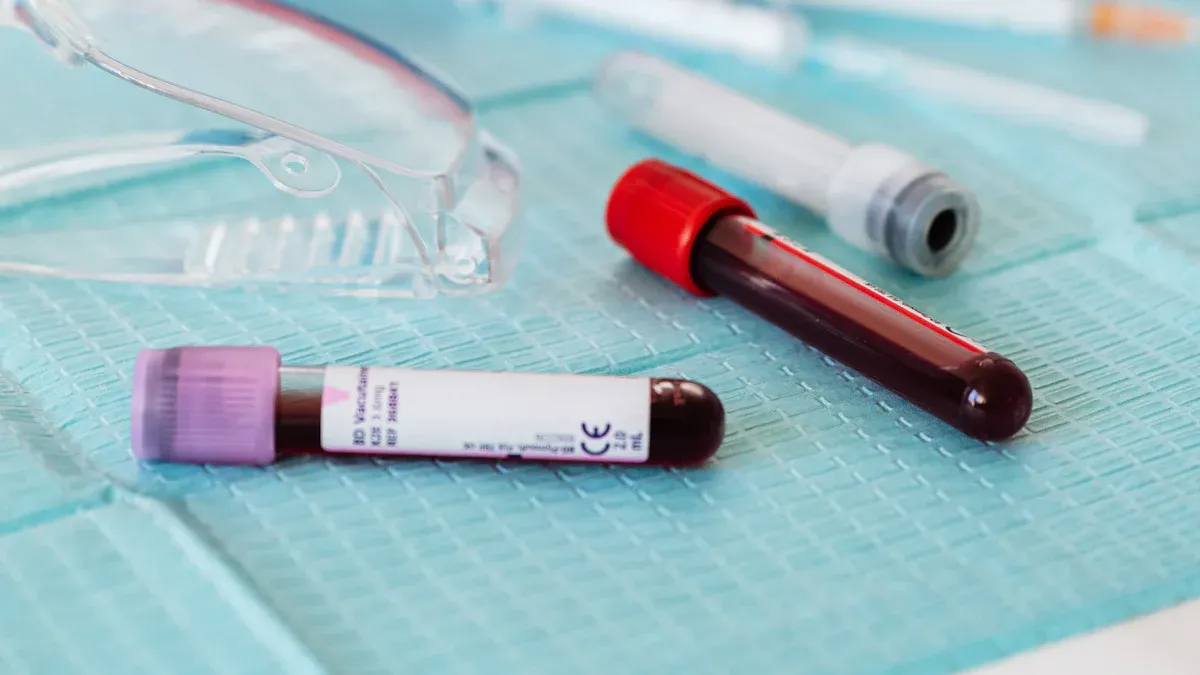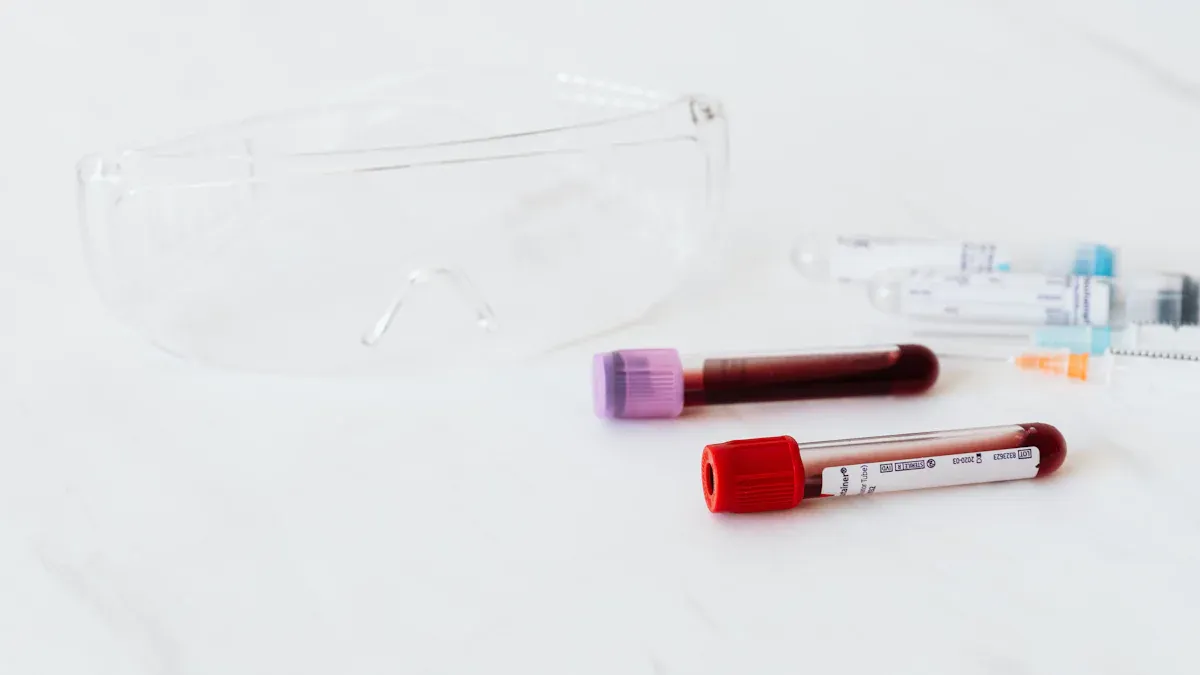PET heat shrink tubing sterilization compatibility made simple

PET heat shrink tubing sterilization compatibility includes several effective methods:
Autoclaving (steam sterilization)
Gamma radiation
Ethylene oxide (EtO)
Chemical sterilization (such as hydrogen peroxide)
Users receive straightforward guidance on selecting the best sterilization methods compatible with PET heat shrink tubing. Helpful tips and a clear table simplify the decision-making process.
Key Takeaways
PET heat shrink tubing can be cleaned in four main ways. These are autoclaving, gamma radiation, ethylene oxide, and chemical sterilization. Each way has its own good points and bad points. Pick the best one for your tubing size and device needs. Think about if your tubing can handle heat or chemicals. Do not use very hot methods like dry heat or open flames. These can hurt the tubing and make it less safe. Always follow safety rules and test your cleaning process. This helps keep the tubing strong and safe. It also makes sure it meets medical rules. If your tubing is thin or delicate, use gentle ways to clean it. Ethylene oxide or chemical sterilization are good gentle choices. These help keep the tubing flexible and strong.
Quick Reference Table

Method Overview
The table below shows the main ways to sterilize PET heat shrink tubing. Each way has its own good points and some downsides. This overview helps users compare choices for what they need.
Sterilization Method | Compatibility with PET Heat Shrink Tubing | Key Features |
|---|---|---|
Autoclaving (Steam) | ✅ Highly compatible | Fast, reliable, no toxic residue |
Gamma Radiation | ✅ Highly compatible | Penetrates packaging, no heat needed |
Ethylene Oxide (EtO) | ✅ Highly compatible | Low temperature, effective on complex devices |
Chemical (Hydrogen Peroxide) | ✅ Compatible | Gentle, preserves material strength |
Note: PET heat shrink tubing sterilization compatibility includes all these methods. This makes it useful for many medical and industrial jobs.
Effectiveness and Limitations
Each sterilization method changes PET heat shrink tubing in different ways. The points below show how well each works and any limits:
Autoclaving (Steam):
The tubing keeps its shape after many uses.
It can handle up to 135°C for a long time and 200°C for a short time.
It does not lose much strength.
It is not good for things that cannot get wet or hot.
Gamma Radiation:
The tubing keeps its chemical and physical features after use.
It does not break down even after many times.
It works well for items that are already packed or cannot take heat.
It might turn a little yellow over time.
Ethylene Oxide (EtO):
It works at low temperatures.
The tubing stays flexible and strong.
You need to air it out to get rid of leftover gas.
It takes longer than other ways.
Chemical (Hydrogen Peroxide):
The tubing keeps over 88% of its strength after 50 uses.
It does not change much in size or insulation.
It is good for delicate or heat-sensitive things.
You may need to handle leftover chemicals with care.
These results show that PET heat shrink tubing stays safe and works well after sterilization. It meets ISO 10993 and USP Class VI rules. Its toughness and fit make it a good pick for medical device insulation and other tough jobs.
PET heat shrink tubing sterilization compatibility

Autoclaving (Steam)
Autoclaving uses hot steam under pressure to clean tools. PET heat shrink tubing works well with autoclaving. This is because PET can handle heat and water. The tubing can take up to 135°C for a long time. It can also take up to 200°C for a short time. This means you can use it many times in labs and hospitals.
Best ways to use autoclaving are:
Use the right heat and pressure.
Let the tubing cool before you touch it.
Do not put too much in the autoclave.
Some things cannot take heat or water. But PET heat shrink tubing keeps its shape and strength after many uses. This makes it good for tough jobs.
Gamma Radiation
Gamma radiation is a way to clean things without heat. PET heat shrink tubing works well with gamma radiation. PET does not melt or change shape from the radiation. It keeps its strength and does not lose its good features.
Tests show:
PET tubing stays strong and bends well after many uses.
Numbers like p-values ≤ 0.05 and < 0.001 show gamma radiation works well to keep PET safe and clean.
PET is better than Nylon 6.6, which gets weak and stiff.
PET tubing can be cleaned many times for medical tools.
The tubing may turn a little yellow, but it still works fine. Gamma radiation is good for things that cannot take heat or water.
Ethylene Oxide (EtO)
Ethylene oxide uses gas at low heat to clean things. PET heat shrink tubing works well with EtO. PET does not get hurt by the gas and stays bendy. EtO can clean hard-to-reach places and tubing without damage.
Best ways to use EtO are:
Make sure to air out the tubing after cleaning to get rid of gas.
Watch how long and how much gas you use.
EtO takes more time than other ways. But PET tubing stays strong and keeps its insulation. This is good when heat or water would cause trouble.
Chemical Sterilization
Chemical sterilization, like hydrogen peroxide vapor, is gentle. PET heat shrink tubing works well with chemicals because PET does not get damaged. The tubing keeps over 88% of its strength after 50 cleanings with hydrogen peroxide. It does not get bigger, smaller, or lose insulation.
Tips for best results:
Rinse the tubing well if needed.
Follow the maker’s rules for how much chemical to use.
Chemical cleaning is good for soft or heat-sensitive things. Be careful with leftover chemicals so you do not leave any behind. PET’s resistance to chemicals helps it last a long time and stay safe.
Methods to Avoid
Incompatible High-Temperature Methods
Some ways to sterilize things use heat that is too high for PET heat shrink tubing. These ways can hurt the tubing and make it not work well. Dry heat sterilization and burning can get much hotter than PET can take. If PET gets too hot, it might melt, bend, or get weak.
⚠️ Important: Always check how the tubing works in real sterilization before using it.
People who work with medical devices know there are risks with using too much heat:
The tubing can break down, which makes devices unsafe.
Devices might not work if the tubing fails during or after cleaning.
There could be delays and higher costs if products need to be fixed or recalled.
ISO 17665-1:2023 says materials must not break down during sterilization.
FDA Quality System Regulations and ISO 10993 say you must test for safety and cleaning.
Not testing and checking can make products unsafe and cause failed checks.
PET heat shrink tubing keeps over 88% of its strength after 50 times using hydrogen peroxide cleaning. This shows it is strong when you pick the right way to clean it.
Other Unsuitable Techniques
Some ways to clean are not good for PET heat shrink tubing, even if they do not use high heat. For example, dry heat ovens, open flames, and microwaves can heat unevenly or be hard to control. These ways can make some parts too hot and hurt the tubing or not clean it all the way.
Other bad ways include:
Strong chemicals like bleach, which can break down the tubing.
Too much UV light, which can make the tubing brittle or change color.
Scrubbing too hard, which can scratch or thin the tubing.
Picking the right way to clean keeps the tubing and device safe. Following the rules and testing helps make sure everything works well every time.
Choosing a Method
Application Needs
To pick the right sterilization method, first think about what you need. Medical devices, lab tools, and machines all have different needs. PET heat shrink tubing is strong and good for electrical insulation. It works well in tough places. You should match the sterilization method to what the tubing does. Gamma radiation and ethylene oxide are good for things that cannot take heat or water. Autoclaving is best when you need things done fast and do not want toxic leftovers. Knowing what the tubing is used for helps keep it working after cleaning.
Tubing Size
The size of the tubing matters when picking a method. PET heat shrink tubing comes in many sizes. It has very exact wall thickness and diameter. These exact sizes help the tubing keep its shape during cleaning. Here is a table with common size ranges:
Parameter | Typical Range / Value |
|---|---|
Wall Thickness | 0.0001 inch (±0.0001 inch) to 0.008 inch |
Inner Diameter | 0.008 to 0.335 inch (0.15 to 8.5 mm) |
Shrink Ratio | 1.1:1 to 3:1 |
Shrink Temperature | 90 to 240 °C (194 to 464 °F) |
Melting Point | 235-247 °C |
Very thin walls and tight controls give steady results. For small or thin tubing, ethylene oxide or gamma radiation work best. These ways help the tubing keep its shape and work well.
Regulatory Factors
Rules help decide which sterilization method to use. Medical and industrial jobs must follow strict safety and quality rules. The table below shows important rules:
Regulatory Framework | Key Requirements | Impact on Method Selection |
|---|---|---|
FDA QSR | Documentation and quality control | Validated sterilization preserves safety and function |
ISO 10993 | Biocompatibility and compatibility | Methods must not degrade material or add toxins |
USP Class VI | Biocompatibility for body contact | Only safe, non-altering methods allowed |
Process Validation | Consistent, safe results | Chosen method must keep tubing intact |
Following these rules makes sure PET heat shrink tubing stays safe after cleaning. Always check that your method meets both the job and rule needs.
Tip: Write down what you need, check the tubing size, and look at the rules. Doing these steps helps you pick the best way to clean your tubing.
PET heat shrink tubing can be cleaned in four main ways. These are autoclaving, gamma radiation, ethylene oxide, and chemical methods. Each way helps the tubing stay strong and safe for medical jobs. PET tubing does not get hurt by most chemicals. It also meets tough rules like ISO 10993 and FDA. The quick table uses good research and expert tips. People should pick the cleaning way that fits their device. They must also follow all safety rules. If they have special needs or questions, they can ask experts for help.
FAQ
Can PET heat shrink tubing be autoclaved multiple times?
Yes, you can autoclave PET heat shrink tubing many times. The tubing keeps its shape and stays strong after lots of uses. Always follow the maker’s instructions for the best results.
Does gamma radiation change the color of PET heat shrink tubing?
Gamma radiation can make the tubing look a little yellow. The tubing still works well and stays strong. This color change does not make it unsafe or less useful.
Is PET heat shrink tubing safe for use in medical devices?
Yes, PET heat shrink tubing is safe for medical devices. It meets ISO 10993 and USP Class VI rules. The tubing stays safe and works well after cleaning.
What is the best sterilization method for delicate or thin PET tubing?
If the PET tubing is thin or delicate, ethylene oxide or chemical cleaning is best. These ways use low heat and are gentle. This helps the tubing keep its shape and stay bendy.
Can strong chemicals like bleach damage PET heat shrink tubing?
Chemical | Effect on PET Tubing |
|---|---|
Bleach | Can make tubing weak |
Hydrogen Peroxide | Safe if used right |
Alcohol | Usually safe |
Strong chemicals like bleach can hurt PET tubing. Always use the cleaning agents that are recommended.
See Also
Understanding FEP Heat Shrink Tubing For Autoclave Use
Essential Facts About PET Heat Shrink Tubing In Electronics
How To Choose The Right FEP Autoclavable Heat Shrink Tubing
Selecting Top FEP Biocompatible Heat Shrink Tubing For Applications
Differences Between Medical And Industrial Grade Heat Shrink Tubing

